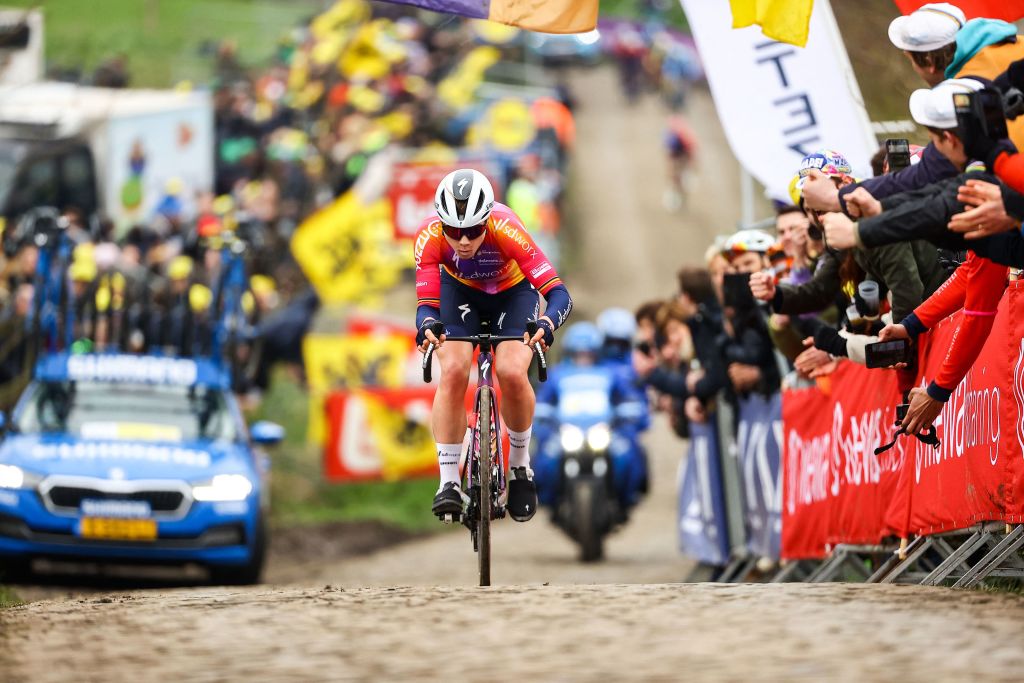
The upcoming Tour of Flanders and E3 Saxo Classic may have to take place without the famous Paterberg climb due to safety issues.
The road on the approach to the Paterberg is currently closed to traffic due to erosion that has nearly undercut the road surface. According to a report in Nieuwsblad.be, the side of the road has slid down 50 metres.
It is feared that further traffic vibrations would cause more subsistence and present an even greater threat to safety.
The part of the road at risk is on the descent on the approach to the Paterberg. It’s reported that the road itself is still intact.
The contractor working on the repairs has assured race organisers that work will be complete in time for the E3 Saxo Classic on March 22nd. The Tour of Flanders men’s and women’s races are set to take place nine days later.
The damaged road is the only route to the Paterberg. If the repairs are not ready in time, there are alternative plans to take the race to the next street along on the way to the next section of the course. For the E3 Saxo Classic the route then takes the riders to the Oude Kwaremont. During the Tour of Flanders, the Paterberg is climbed twice, first the course heads to the Koppenberg and secondly as the final climb of the day, just 13km from the finish.
The damage is thought to have occurred around a month ago due to heavy rains in the region. Work has only just begun due to the land being privately owned.
Work to repair the road is expected to begin on March 1st and take ten working days. However, if more inclement weather occurs, it’s expected that the works will take longer.
The Paterberg has been a key feature on the Tour of Flanders for many seasons, having been included every time since it was first introduced to the race back in 1986.
It’s a short but steep climb at only 360 metres long but with an average gradient of 13% and pitches of over 20% at the top.
Since 2012, it has combined with the Oude Kwaremont to form the central challenge of the modern Tour of Flanders route for both men and women. The absence of the climb at this year’s race would mean a longer flat section towards the finish.







